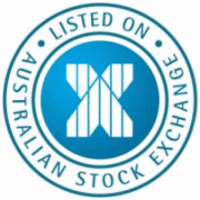
Evan Lucas for Chris Weston, Chief Market Strategist at IG Markets
Quantitative easing continues to be unwound at separate speeds as a further $10 billion is removed from the asset-purchase program.
This takes the month bond-purchase program to $55 billion a month, with $5 billion coming out of both treasuries and mortgage-backed securities.
Previous chair Ben Bernanke had gone to great lengths to stipulate the differences between the asset-purchase program and the record low Fed funds rate which makes up QE. However, last year he stated in his Q&A testimony that taper could begin in 2013, which caused mass jitters in equity markets and a selloff in the bond market.
In her first address as chair, Janet Yellen used language which is heavily open to interpretation. Yellen was asked to define the change in stance from the Fed funds rate remaining at near-zero “for a considerable time” after the asset-purchase program ends, to “well past the time”. Her response received more attention than the rest of her hour testimony; she said the Fed see considerable as “around six months”.
The market spilled on the prospect of rates being raised as early as March 2015; something none seem to be positioned for. The end of the asset-purchase program is open-ended and also open to interpretation. On current form it could be completely unwound in October.
The market was also caught on the back-foot at the size of the rate rises, with the FOMC moving its medium expectations for the Fed funds rates from 0.75% to 1% by the end of 2015, and from 1.75% to 2.25% by the end of 2016. The market consensus before the meeting was for rates to be at 0.65% by the end of 2015 and that sent the bond markets into a tail spin.
Two-year and five-year treasuries rates jumped as equity reacted violently to the news (although it must be said on fairly mild volumes). Gold shed a further 0.8%, including $10 in 20 minutes as the USD investment case rose.
The shift in central bank standing from dovish to neutral (there are even touches of hawkishness in this statement) over the past four months has made the USD an investment currency once more despite pressure from a rather adverse winter.
Yellen believes the blimp in economic data seen in Q1 from the winter weather is likely to filter out in Q2 and that puts risk pairs at the forefront of investors’ minds. Sizeable volumes were seen in the crosses with EUR, AUD and NZD (all sold down) as USD/JPY was bid up. This hasn’t saved the Nikkei from the equity carnage crossing Asia, as the inverse correction with the JPY didn’t hold, which saw the Nikkei lose 1.5%, the Hang Seng lose 1.1% and ASX fall 1.1%.
The currency pair of choice remains USD/CAD as central bank differentials remain a key driver of the pair. The hawkish to dovish ratio continues to move further apart as the commodities-driven Canadian economy sees softness and the BoC talks of rate cuts, compared to the Fed which is now expecting rate rises on the strengthening US economy. The breakout looks telling (see below).

Stimulus for China?
What moderated the scale of rout in Asia has been news that China is looking to release measures to expand domestic demand and stabilise economic growth. The state council has announced that it will see China speeding up construction and infrastructure projects after several sodden industrial production numbers.
The increased downward pressure seen in the Chinese economy over the last two months was likely to trigger a response from central powers. Extrapolating out the last industrial production read, Q1 GDP is likely to hit 7%, well below the reconfirmed 7.5% growth figure the central government wants to see.

